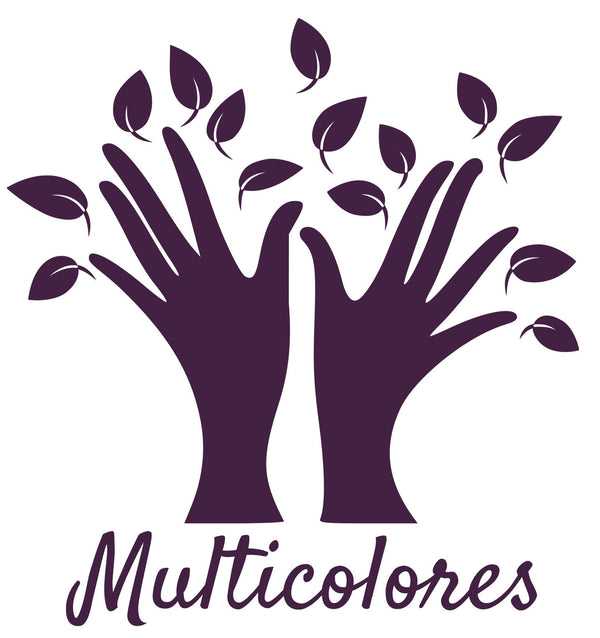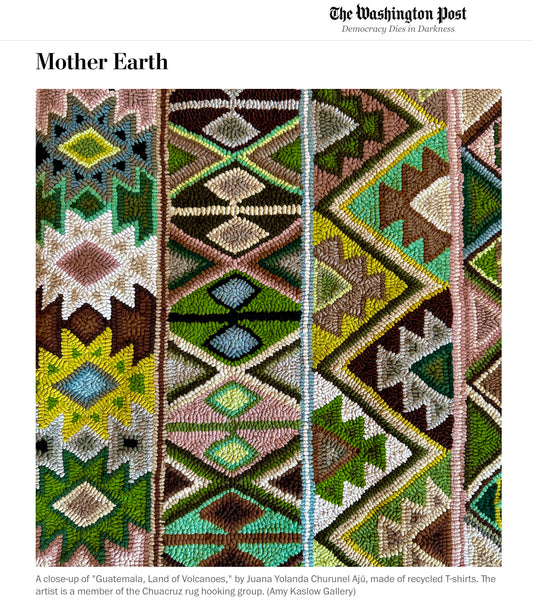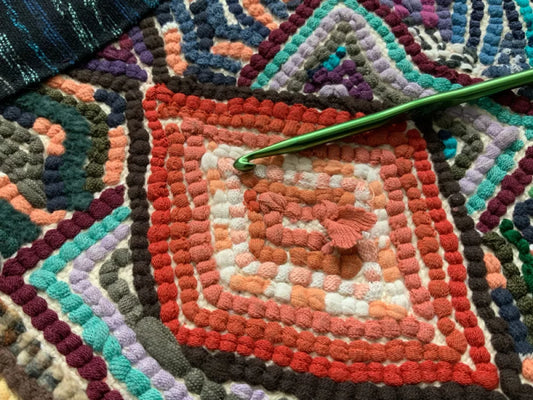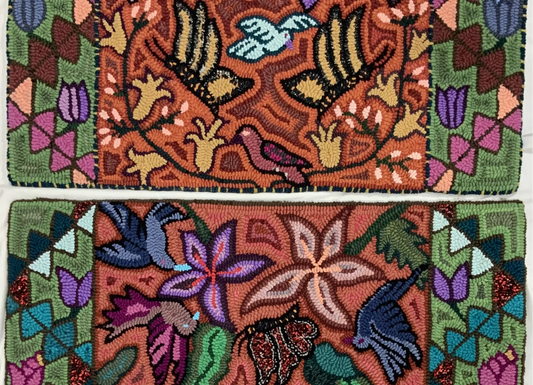April 22nd marks the yearly celebration of Earth Day with the mission of diversifying, educating and activating the environmental movement worldwide. The theme of 2021 is ‘Restore Our Earth’. The whole world will be discussing ways to change human behaviours and provoke policy changes to protect the environment.
In the face of the rapid transformation that Mother Earth has been experiencing at the hands of humanity, losses in biodiversity and the deep ecological crisis that has been unfolding as the result of global climate change, people throughout the world are exploring alternative practices with ethical and spiritual foundations, cosmologies and philosophies in search of models which may sustain Mother Nature instead of destroy it.
Indigenous knowledge, wisdom and customs are incredibly valuable resources to cultivate a sustainable relationship with nature which has the potential to address this global crisis and help heal the Earth. Through ancestral practices that often integrate spiritual and cultural components, Indigenous Peoples around the world are crucial stewards of our environment and its fast-depleting resources. There is much to learn from their traditions and belief systems, their deep respect for nature and their strong sense of place and belonging. They are examples of ways of life that match up well with modern notions of nature conservation and the sustainable use of natural resources.
In Guatemala, Indigenous communities have historically protected our environment and remaining biodiversity. Their deep connection to the land and respect for Mother Nature have played a key role in the protection of our natural resources- which has also placed them at great risk for fighting against multinational companies seeking to destroy and loot ancestral lands for economic gain.

Maya people have a special relationship with Mother Earth and nature. They believe that cultivating a respectful relationship with the land and the sacred natural elements based on reciprocity is fundamental to maintaining the connection to the origins of life. The traditional knowledge, history, and ceremonies that are born from this relationship allow them to conserve and protect their lands, territories, and natural resources. The elders teachings say that our connection to the world and the cosmos are the basis of our actions, of our thoughts, and our sentiments in life and of life.
“The relationship between people and nature inspires me. Maya people have an especially strong relationship with nature, which is why I like depicting birds, mountains, and other natural elements in my designs. Through my rugs I get to express the power of both the earth and the sky. From the earth comes our food and our sustenance, and from the sky comes the rain that gives life to everything.”
-Rosmery Pacheco, Rug-Hooking artist from the K’iche’ community of Totonicapán.
Sharing wisdom through design
Multicolores artists often share insights about the knowledge, wisdom and customs of their Maya communities in their artwork. Oftentimes, delightful artistic representations of their livelihoods and community life offer an opportunity to learn about their ancestral practices of farming, harvesting and cooking, their connection to other live beings, relating to the elements, respecting the natural cycles of life and living in harmony with Mother Nature.
Maize has been an important element in Mayan culture since the pre-hispanic era, not only for its nutritional value but also for its economic, social and spiritual uses. The artists have shared the different traditions and beliefs around the planting and harvesting of this crop in their artwork- it’s evident how deeply connected their communities are to the natural cycles of life and the interaction with the elements. They take care of the land all year long, use sustainable farming practices involving all members of the community in each stage. They take what they need for sustenance, share with others and perform ceremonies to thank the earth. When they use a maize symbol or representation in a design, it is usually filled with meaning.

“Before planting the new crops, families in my community pray so the harvest is successful. During the planting, we take care of our tools, we don’t just put them on the ground after we finish, we make sure to treat the soil with respect, we use organic fertilizers and in return, we get good corn. When crops start sprouting we give thanks by bringing flowers to the field. When it’s time to harvest, we celebrate with music, bringing more flowers and water, the whole community participates. Through this process we try to limit our meat and eggs consumption to restore some balance to the earth, that is what our grandparents taught us”.
-María Ignacia Vicente, Rug-hooking artist from the K’ich’e community of Chirijquiac
The symbols and representations of nature that the artists use in their designs also speak about their relationship with Mother Earth, they often use natural elements to represent wellbeing, different feelings and metaphors. Those elements are often tied to conservation ideas and practices and a deep understanding of balance.

“My well-being rug design was inspired by a day that I spent in the countryside, gathering fruit from the apple trees. While I collected apples to bring to market, birds and other animals shared the harvest with me. To me, well-being means this idea of abundance: that there is enough, that both humans and other living beings can enjoy the fruits of the harvest.”
Carmen Cuá, Rug-hooking artist from the K’ich’e community of Chirijquiac.
Ancestry, spirituality and belonging
The ancestral practices observed by Maya communities are based on spiritual components, which shows how deeply rooted this is in their identities and the importance that it holds. On one side, the practices and rituals with a base in Maya cosmogony are still held by the elders and Aj’kij (Maya spiritual guides), who share their wisdom with younger generations. And the adoption of new practices in more recent decades with a base on Christianity, offer an interesting form of syncretism.


“Maya spiritual guides carry out rituals before the first rain comes, to request Mother Earth that our crops grow healthy. They ask the four cardinal points and the natural elements for forgiveness for all the damage that humans have caused Mother Nature and thank them for the resources that they provide us and the opportunity to grow crops again. Then they make the commitment to look after the Earth during the harvesting season and beyond.
Others that have different beliefs do a thanksgiving ceremony at a church, bringing a sack of soil to be blessed, which is then taken to the field to cover the crops. We then share a meal with the corn and ask the Earth for permission to harvest there”.
-Petronila Jorge Set, Rug-hooking artist from the K’iche’ community of Quiejel.
Younger generations have grown up with tales of the past and how things used to be- enjoying a healthier environment, cleaner lakes and rivers, ways of life that protected biodiversity, stronger and healthier people. They also regard the wisdom from their ancestors with deep respect and cherish the knowledge shared by their grandparents to protect Mother Nature.


“When I hear from my grandparents or look at old pictures, I realize how different things were before. Our ancestors supported the environment with daily actions. They used hand-woven baskets and textiles to carry food from the market instead of plastic bags. Our grandparents to this point use organic fertilizers on the soil that they make with the organic waste they produce, and are aware of how our every action impacts the Lake. Lake Atitlán was clean and clear before. Many people subsisted on the fishing that was done with respect to the lake. These days, that is no longer possible, but we should fight to bring those practices back.”
-Micaela Yaj, Embroidery Artist from the Tz’utujil community of Santiago Atitlán.
“Our grandfather has taught us to respect the land. People nowadays hurt the environment to make things easier or faster. Our family doesn’t burn the land after each harvest, we were taught to clean the field carefully and to use the resources from the same land to get it ready for the next harvest. We try not to use plastics, even now during the pandemic, we prefer using fabric masks instead of disposable ones.”
-Petronila Jorge Set, Rug-hooking artist from the K’ich’e community of Quiejel
The power of one to effect change
Multicolores artists are certain of the power of one to effect change. These women have overcome challenges and impacted their communities with their positive influence. Healing the environment is yet another way that several of them want to contribute. They take pride in the use of upcycled and natural dyed materials to make their art, are committed to daily actions to contribute to the betterment and healing of the environment, and have great ideas for solutions.

“My family uses hand-made bags and textiles made with natural fibers and leaves to carry our things. We refuse plastic bags and have acquired a commitment to save the water and protect it. I make sure to share information with my friends, at work, etc. about pollution and how it affects the Lake. I constantly ask people to pick up their waste when they throw it on the street. It is very important to me to create awareness in my community of how we can help the environment. Small daily actions go a long way, it is important to personally acquire awareness but also promote it along other people. Our priorities right now are to reduce waste, responsibly use resources and protect the water.”
-Micaela Yaj, Embroidery Artist from the Tz’utujil community of Santiago Atitlán.
“What we need to do to heal the environment is follow what our ancestors have taught us. We have to maintain the knowledge and transmit it to future generations. Our grandparents protected the Earth before us, now it’s our turn, we can’t let these customs die.“
-Petronila Jorge Set, Rug-hooking artist from the K’ich’e community of Quiejel
“I am teaching my children to take care of nature, plant trees and look after them, to respect animals and the sources of water. We are learning to recycle and separate waste. It’s important to educate our children about these topics to preserve what is left of the environment and help it recover.”
-María Ignacia Vicente, Rug-hooking artist from the K’ich’e community of Chirijquiac
Rug-hooking artist Nicolasa Pacay, a participant in Multicolores Leadership Program has actively spoken against improper waste disposal and the installation of a dumpster in her community, influencing the Mayor’s decision to revert it. She is also working alongside fellow artist and leader Glendy Muj in a reforestation project as part of their final year of the program. Several leaders chose environmental topics to contribute to the communities.
We all play an important role in restoring and healing Mother Earth. We are part of the natural world and depend on other species and natural resources to survive. We need a healthy Earth to support our livelihoods, health and happiness. As we celebrate this day with reflections, discussions and looking for solutions, it is important that we also recognize the vital role that Indigenous Peoples around the world play as custodians of the land and protectors of natural resources, and make a commitment to learning from their sustainable practices and empower them in their knowledge and skills, as this is key four our future.
-Mae Ardón




